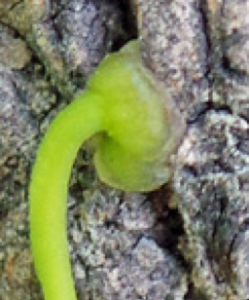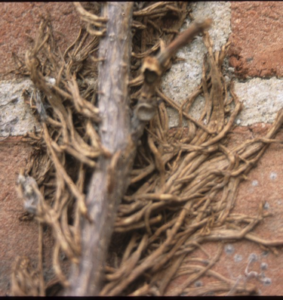Killer Vines and How to Spot Them

Telling the Good Guys From the Bad
Not all vines are the Devil — it just so happens that most of the ones people like to train up their houses are. This may be because they hang on for everything they’re worth, so a strong wind or a violent storm won’t result in a massacre. Whatever the reason, it’s led to a lot of damage to homes for hundreds of years, even if the homeowner never knew it.
Identifying damaging vines isn’t difficult, even the beginner horticulturalist can spot the differences once they’ve been shown what to look for.
Elements of a Damaging Vine
Vines don’t set out to destroy your home, they’re merely doing what vines do: climb. It’s just that some of the climbing methods that vines use tend to be fairly destructive in a long term kind of way. Vines have several different methods they use to climb. Some will literally grow in a spiral form to wrap around a nearby support, others send out specially modified parts called tendrils that coil around whatever they can find.
Those two types of climbers are basically harmless, at least as far as your siding is concerned. The real killers are the vines that climb using an adhesive disk or adventitious roots. Both adhesive disks and adventitious roots are very difficult to dislodge once they’re established. You can imagine how this kind of tenacity could bust masonry, dislodge vinyl siding, pull down gutters and lift shingles from your roof.
 Adhesive disk of P. quinquefolia
Adhesive disk of P. quinquefolia
Vines with adhesive disks literally have shoots coming off the vine tipped with roundish pads that grip tight using an adhesive that the plant produces. A common troublesome vine that uses this technique is Virginia creeper (Parthenocissus quinquefolia). Virginia creeper is a beautiful disaster for houses pretty much everywhere. In the summer, it’s a deep green and as fall approaches, it turns to a burning red-orange. It can be hard to make a villain out of a vine like that.
 Adventitious roots on brick home
Adventitious roots on brick home
Adventitious roots are a little less complicated, biologically speaking. These are just extra roots that the plant uses to grab hold of things by penetrating any available crack or nook that’s available. The plant doesn’t care if that happens to be a crack in a brick on your house or a nook in a tree somewhere. These structures look a bit like the air roots that orchids produce, or, for those of you who don’t cruise the floral department at your market, they can appear much like thick hairs and cause a centipede sort of effect on the leafless parts of the vine. English Ivy (Hedera helix) is a champ at producing these roots and also climbing up houses.
The Indirect Problem With Climbers on a Structure
Beyond being able to cause direct damage to your home anywhere and anywhere they can get a root in sideways, growing climbing plants on a house opens you up for all sorts of interesting problems. Remember that the environment under that mass of leaves is generally very humid, making a perfect place for mold, insects or rot to take hold.
There’s no question about it, growing a vine on a house is really a very bad idea. It was traditional at one point, but now we know better, so we should do better. Tackling an established vine is no picnic, but with patience, consistency and plenty of herbicide, you can wrestle the monster to its death. Removing all the attachments is a different story, though. Depending on your siding and the type of vine you’ve killed, you may just have to learn to live with root remains until they finally dry up and blow away.
Not Ready To Go On A Killing Rampage?
If you can’t bring yourself to destroy the vines that are trying to destroy your home, or you simply don’t have the time, log into your HomeKeepr community. You’ll find highly recommended landscape contractors who can not only remove those killer vines, but suggest vines and other landscape elements that will be more compatible with your home and your longer term remodeling goals.


